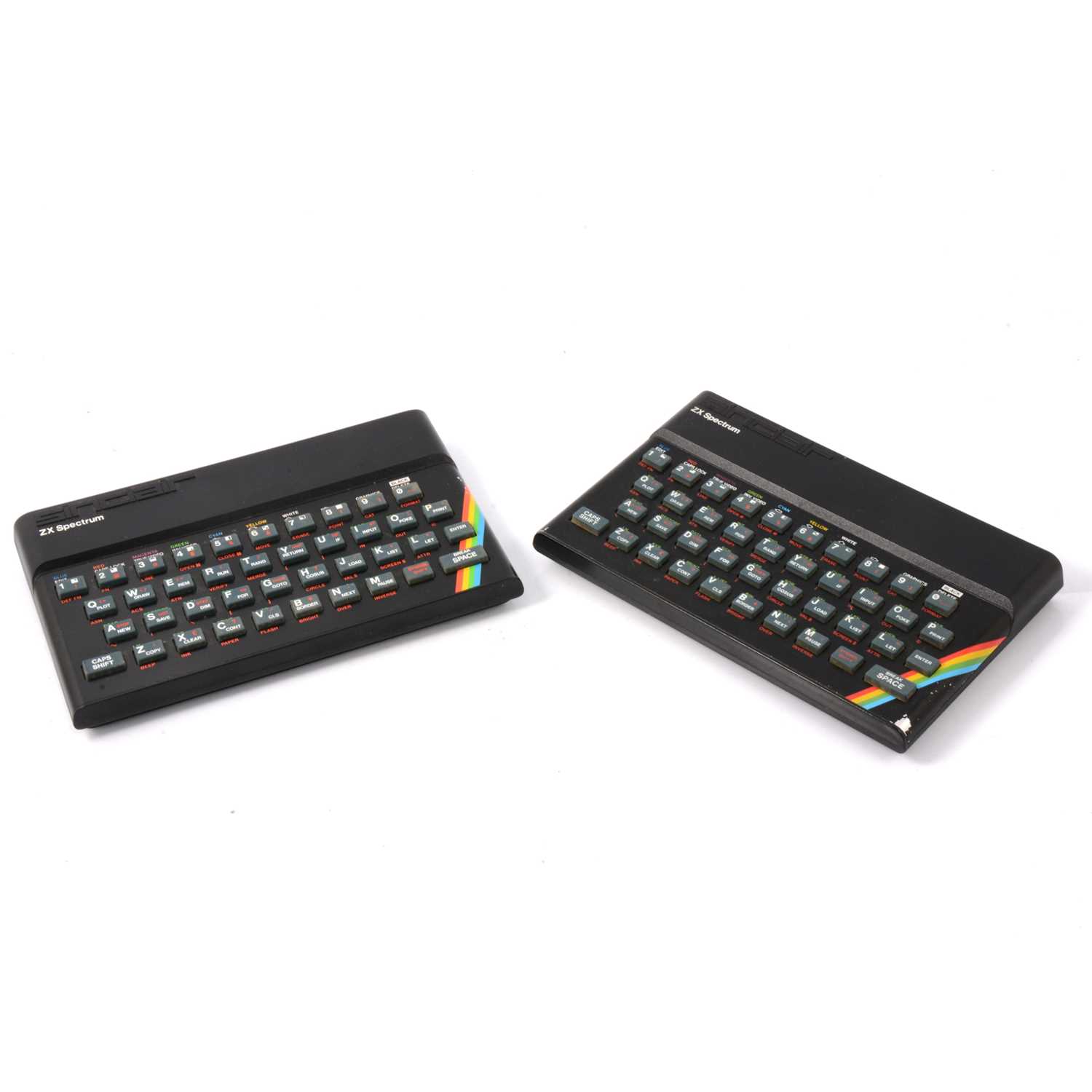

Data transfer was via audio in/out via cassette deck or by way of attaching an Interface 1 and Microdrive(s) (pictured below) to the rear I/O expansion port (edge connector). The famous keyboard itself was of membrane type with a rubber overlay and was designed this way to keep cost down but resulting in it becoming the Spectrum’s greatest weakness with membrane failure being a major fault on these machines. Issue 1 machines (top picture) could be distinguished by their lighter grey keys as opposed to later darker blue/grey keys of later issues (six altogether up to the release of the 128K). The second option was in the true spirit of Sinclair and was in the form of a kit which you soldered in yourself. You had two choices of how this was accomplished, the first being a postal option whereby you mailed your Spectrum off to Sinclair Research and it was returned to you upgraded. An extra 32K of RAM could be added to the 16K Spectrum in the form of a daughterboard on Issue 1 machines or by way of extra chips on subsequent machines. Released in 1982, the 16K and 48K ZX Spectrum continued Sinclair’s trend for affordable computing and cost only £125 (later reduced to £99) and £175 (later reduced to £129) respectively. For the purposes of this article I will only be listing official Sinclair branded models and not any of the numerous clones that were produced worldwide. The design of the internal hardware was by Richard Altwasser and the external design of the unit was undertaken by Rick Dickinson, the genius industrial designer already responsible for draughting the ZX80, ZX81 and the following year, the Sinclair FTV1 Flat Screen Pocket TV. The fact this was retained is a clue as to what Sir Clive originally intended his first colour computer to be, not the games machine as we all now remember it, but instead (and like the ZX81) a multi-use hobbyists machine which could also be used as a tool for programming. This system not only saved time (once you got used to the key combinations) but also reduced the amount of memory needed as each word only took up one byte in memory.

Gone was the touch sensitive keyboard, now replaced by the (in)famous ‘dead flesh’ rubber keys but still retaining the innovative Sinclair one touch-one word programming system implementing Sinclair BASIC. Gone was the silence, some might say this was not a good thing, early Spectrums could quite literally BEEP and that was it. Gone was the black and white, the Spectrum now boasted an 8 colour palette and 2 brightness modes. and following on from the huge success of his previous home micros the ZX80 and ZX81 was Sir Clive Sinclair’s first colour computer the Sinclair ZX Spectrum (code-named ZX82 during development). Released in 1982 by Sinclair Research Ltd.



 0 kommentar(er)
0 kommentar(er)
